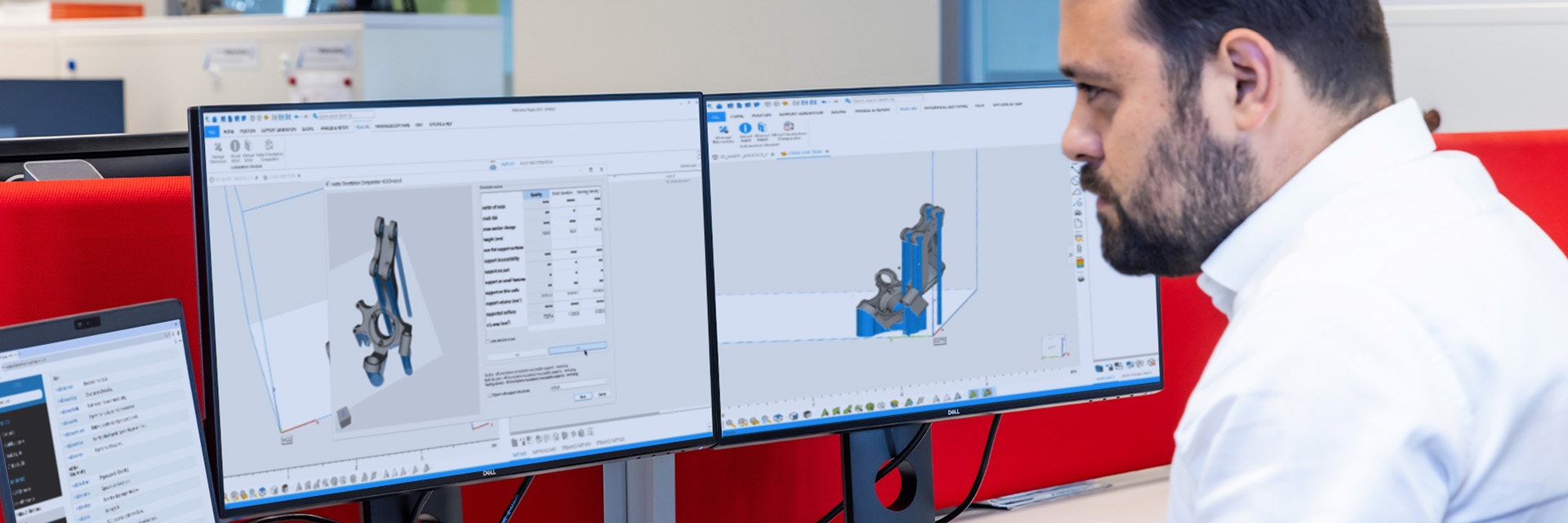EXPERT INSIGHT
3 Automation Hacks to Reduce AM Costs, Boost Productivity, and Establish Consistent Part Quality
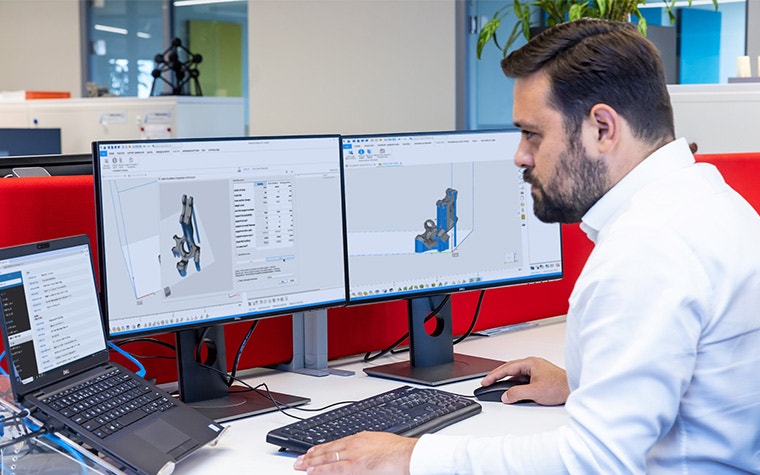
In the additive manufacturing (AM) world, time-consuming design, costing, and data and build preparation tasks can be a major bottleneck for your business, impacting productivity and profitability. To solve these issues, manufacturers can now use AM software that automates these repetitive workflows for key tasks to ease the burden on their workforce.
In a recent webinar, our experts, Aylin Kertik, Senior Customer Solution Architect, and Koen Neutjens, Product Line Manager at Materialise Software, discussed three ways the Magics Software Development Kit (SDK), can help companies eliminate labor-intensive tasks and optimize their AM operations.
1. Ensure quality and repeatability with automated, customizable part screening and analysis
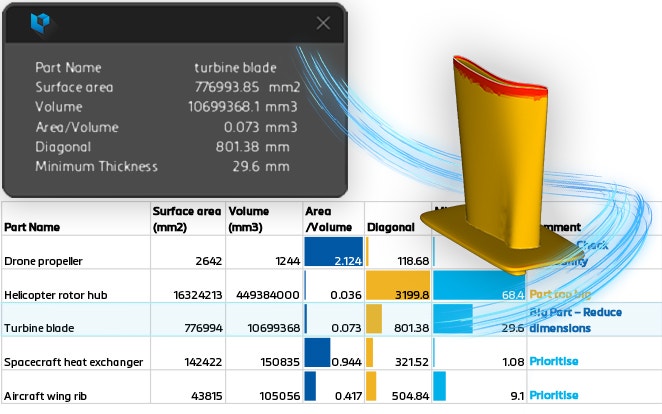

The more automation is embedded into a company’s workflow, the greater its efficiency and overall productivity. With Magics SDK, organizations can automate their part screening process to extract key properties like surface area, volume, and wall thickness. These metrics can then be used to rate their parts for printability with AM — benefiting their overall productivity, as certain parts are prioritized to leverage specific AM technologies.
Furthermore, integrating automation into their 3D printing operation can help AM champions accelerate their process of identifying parts that have potential for AM at scale, without having to evaluate each part individually. And it could do the same for your business, too! By automating critical tasks and leveraging advanced algorithms through Magics SDK, organizations can scale their part screening workflow, standardize processes, and save on costs in the long run.
2. Free up time during data and build prep, allowing your workforce to focus on more value-added activities
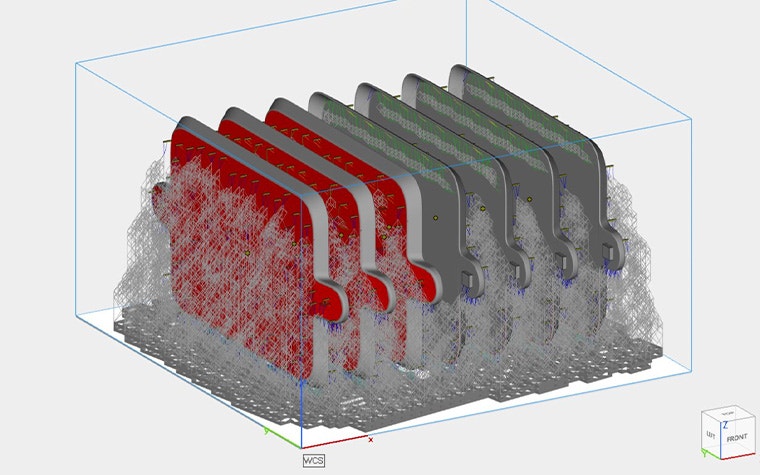

Have you ever experienced warpage or instability in your stereolithography (SLA) or digital light processing (DLP) builds that prevented you from producing first-time-right prints? One of our customers faced this exact issue. They turned to Magics SDK and the power of automation to solve this particular conundrum — and another software solution.
By combining it with the e-Stage for Resin module, they automatically added support tags and structures with just one click to streamline the process even further. How did this benefit them? Rather than getting overloaded with labor-intensive processes, their data prepper could focus on higher-value tasks.
As a result, they achieved vertical DLP and SLA parts that were tightly stacked and easy to post-process. Magics SDK works in tandem with various software tools in our library to maximize print capacity and design goals. And for this team, this software combination increased their first-time print success rate, alleviated mundane tasks from their team members, and helped them apply their unique skills toward activities that fostered more innovation and growth within their business.
3. Build your own applications: a Metal Orientation Comparator tool
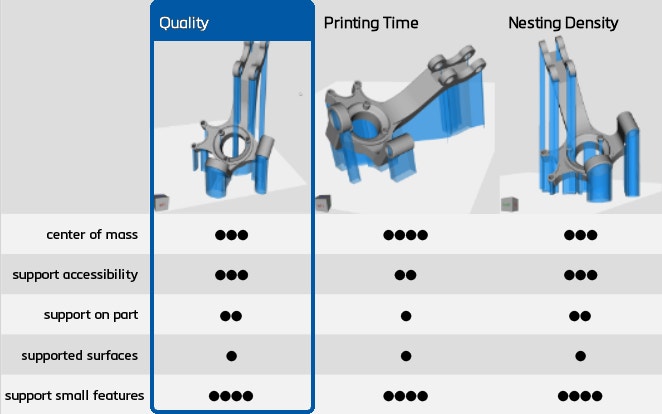

Consistency and repeatability are two characteristics many companies strive for but run into issues during their AM production. Optimizing the speed and output of a fleet of 3D printers can be cumbersome if done manually. And tinkering with printing parameters isn't the best solution, as it usually takes considerable time and expertise. Moreover, the lack of first-time-right prints is just as costly, damaging employee morale and a company's sustainability ambitions.
This is compounded even further if companies struggle to find skilled AM employees. Training and retaining AM knowledge is a major pain point holding companies back from progressing on their AM adoption journeys. And unfortunately, nobody is immune to this trend and potential pitfall.
Our Manufacturing department recently faced this scenario when a data prepper decided to take on a new challenge. Their departure depleted the team’s resources and could have interfered with production, mainly their parts' quality and consistency. However, they overcame this hurdle by developing their own Metal Orientation Comparator tool by leveraging Magics SDK.
Developed by our manufacturing team at the Metal Competence Center in Bremen, it uses Magics SDK to automatically generate and evaluate different part orientations and support configurations — optimizing for criteria like surface quality, build height, and nesting density. The most remarkable thing about the tool is, however, that it reduced their data preparation costs by a third while allowing the team to continue scaling their operations.
Consequently, the Metal Orientation Comparator that was built on top of Magics SDK provided the team with multiple benefits. It gave them the autonomy to build their own application while using the tried and true advanced algorithms that power Magics today. As a result, their app was able to help eliminate the need for repetitive, labor-intensive data and build preparation tasks through automation. Plus, with the help of smarter algorithms and custom Python scripts, they used the tool to determine the optimal orientation and auto-generate supports based on key features.
This essentially streamlined their AM processes and meant they could be more efficient and productive without increasing their headcount. The ability to tweak and optimize every detail of their build preparation workflow with automation enabled the team to increase marginal cost savings, ultimately boosting profitability.
Additionally, the modular nature of Magics SDK enables custom scripts that can be launched directly from the software or integrated into third-party solutions. The flexibility to adapt the automation to the team’s specific needs and evolving requirements is a game-changer, resulting in a more efficient, scalable production.
Custom scripts: your key to getting the most out of Magics SDK
“The key to your success with Magics SDK is to have a collaborative approach that combines the expertise of data preparation specialists and software engineers,” says Koen.
Our Professional Software Services Team provides custom scripts or can equip your team with the tools found in Magics SDK to develop your own. Whichever option you choose, it’s a surefire way to improve productivity in your AM operations. The team can even assist with the discovery, analysis, and implementation process of your customized automation scripts, covering the whole process.
At its core, Magics SDK incorporates over 850 operators that can be leveraged using Python to automate a wide range of data preparation and build optimization tasks. Its modular structure allows you to combine different building blocks to create tailored solutions for your application or project.
For example, the Thin Wall algorithm can identify regions of a part that are too thin to be reliably printed. Then, a script can be developed to automatically add support to those areas. The result? Reliability. The tool ensures a printable part while minimizing the need for manual intervention. Beyond support generation, Magics SDK offers a wealth of other optimization capabilities.
Operators are available to calculate many different part parameters, but here are three important ones in particular:
- Center of mass
- Convex hull
- Projected footprint
These are crucial for determining the optimal build orientation to maximize machine throughput and part quality. Furthermore, as the scripts based on Magics SDK can be launched directly from Magics or even integrated into third-party workflows and software solutions, you can seamlessly incorporate automation and optimization into your existing AM processes.
So what are you waiting for? Use automation found in the Magics SDK module to drive greater productivity, consistency, and profitability in your production — your employees, customers, and stakeholders will thank you for it.
Share on:
You might also like
Never miss a story like this. Get curated content delivered straight to your inbox.
